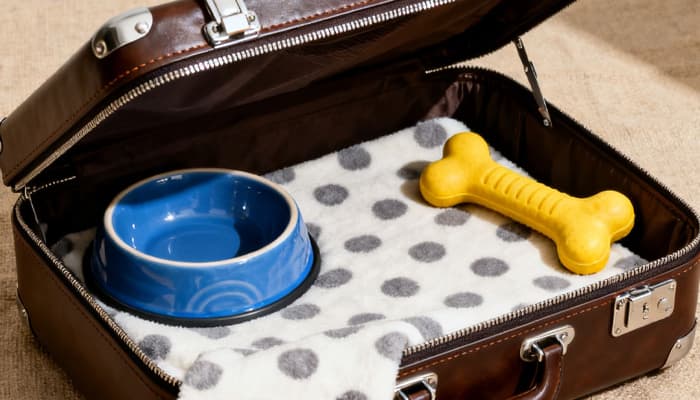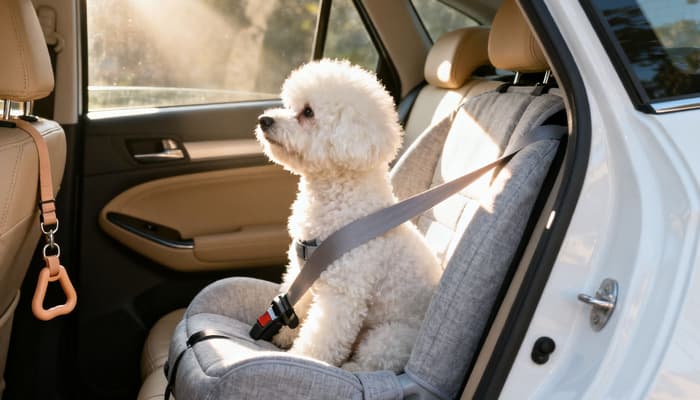
If you’re someone whose heart skips a beat at the sight of a playful puppy, a lazy cat basking in the sun, or a flock of exotic birds, you know that traveling as an animal lover comes with its own set of joys—and challenges. Whether you’re planning a weekend getaway, a long-haul trip, or a spontaneous road trip, the key is balancing your wanderlust with your love for animals. Here are seven practical tips to help you travel without compromising your passion for furry, feathered, or finned friends.
1. Research Animal-Friendly Destinations

Before booking a flight or hotel, it’s worth checking how animal-friendly your destination really is. Some cities are perfect for animal lovers, offering a wealth of options like dog-friendly beaches, cat cafés, or wildlife sanctuaries. For instance, cities like Portland, Oregon, and Amsterdam in the Netherlands are renowned for their pet-friendly public spaces. On the other hand, some countries have strict regulations regarding pets and wildlife. Knowing the rules ahead of time will save you stress and allow you to enjoy your trip while respecting local laws.
Tip: Look for travel blogs and social media accounts run by animal lovers—they often share hidden gems that don’t appear in typical travel guides.
2. Choose Accommodations Wisely

Not every hotel or Airbnb is pet-friendly, and even if they claim to allow pets, some may have size restrictions or extra fees. For those who travel with dogs or cats, always check for amenities such as pet beds, food bowls, and nearby walking areas. If you’re staying somewhere for more than a couple of nights, it’s worth contacting the property directly.
For animal lovers traveling without pets, accommodations near wildlife reserves, aquariums, or farms can offer daily interactions with animals, creating memorable experiences without the responsibility of bringing your own pet.
3. Pack Smart for Your Pets

If you’re traveling with a dog, cat, or smaller pets like rabbits or birds, packing the essentials can make a huge difference. Bring enough food for the entire trip, any required medications, travel bowls, a favorite toy or blanket, and a leash or carrier that meets airline regulations if flying.
Even if your pet isn’t coming along, it’s smart to carry a few basic items that can help animals you might encounter on the road—a portable water bottle for stray dogs, a small first aid kit, or even biodegradable waste bags for wildlife areas. These small gestures make you a responsible and compassionate traveler.
4. Plan Animal Encounters Responsibly
Seeing animals in the wild or interacting with them up close can be a highlight of any trip, but it’s essential to do so responsibly. Avoid tourist attractions that allow direct contact with wild animals in unnatural settings, such as elephant rides or photo ops with tigers. Instead, look for sanctuaries or rehabilitation centers that prioritize animal welfare.
Volunteering for a day at a local animal rescue or wildlife conservation project can also be an unforgettable experience. It’s a hands-on way to support animals while getting to know the local culture from a unique perspective.
5. Respect Local Wildlife and Habitats
Animal lovers know that watching a creature in its natural environment is special—but it’s also a responsibility. Always follow local guidelines: stay on marked trails, maintain a safe distance, avoid feeding wild animals, and never disturb nests or dens. Even seemingly harmless interactions, like touching a bird or dolphin, can have serious consequences for the animal.
A great tip: Download offline maps or wildlife guides so you can identify species without disturbing them. Many apps also let you report sightings, contributing to citizen science efforts worldwide.
6. Be Mindful of Transportation Options

Traveling with animals often means extra planning for transportation. Some airlines allow small pets in the cabin, while others require them to travel in the cargo hold. Train and bus services vary widely by region, so research options before you go.
For road trips, frequent stops are essential for your pet’s comfort. Make sure there’s plenty of water, a shaded rest area, and a secure space in your vehicle. For those traveling without pets, consider eco-friendly transportation methods that minimize impact on wildlife habitats—like electric buses or trains—which help protect animals’ homes while you explore.
7. Connect with Local Animal Communities
Finally, connecting with local animal lovers can elevate your travel experience. Look for pet meetups, volunteer opportunities, or animal-focused tours. Even if your primary goal is sightseeing, a quick visit to a local animal shelter or sanctuary can provide insight into how different communities care for animals.
You might also find yourself swapping tips about pet-friendly restaurants, scenic walks, or hidden wildlife spots that you wouldn’t discover on your own. Social media platforms and local event listings are great places to find these communities before or during your trip.
Bringing It All Together
Traveling as an animal lover is a balancing act: enjoying new places while keeping your four-legged, feathered, or scaly friends in mind. With a little planning, a lot of curiosity, and a respect for local wildlife and regulations, you can create experiences that satisfy both your wanderlust and your love for animals.
Whether it’s sipping coffee in a cat café, volunteering at a sea turtle sanctuary, or simply sharing a quiet moment with a dog-friendly beach at sunset, the best trips are the ones that make both you and the animals happy.
After all, travel isn’t just about seeing new places—it’s about connecting with the world in ways that matter. And for animal lovers, those connections often come with wagging tails, soft purrs, or the flutter of tiny wings.
